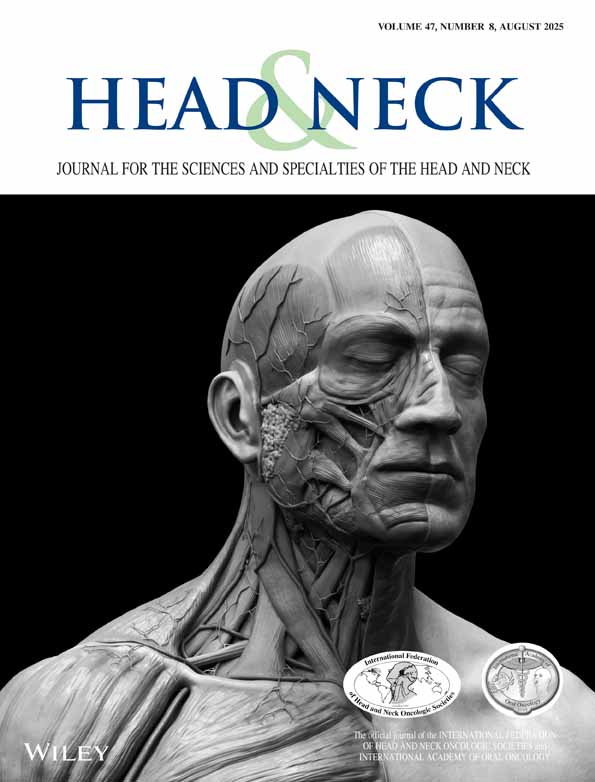Numeracy and the shortcomings of utility assessment in head and neck cancer patients*‡
The views expressed in this article are those of the authors and do not necessarily represent the views of the Department of Veterans Affairs.
Presented at the Western Section Meeting of the Triological Society February 1, 2003, in Indian Wells, California.
Abstract
Background.
Because survival differences between surgical and nonsurgical treatment for head and neck cancer (HNC) are hard to detect, increasing focus has been placed on quality of life (QOL) differences after treatment. Utility assessment provides insight into QOL. Evidence suggests that a patient's comfort with numerical concepts (“numeracy”) may influence utility measures. We hypothesize that patients who are nonnumerate provide inconsistent utility data in QOL studies.
Methods.
New HNC (n = 18) patients were recruited to participate. Patients completed a numeracy questionnaire, a utility assessment, and a global QOL questionnaire. Higher scores reflect better function. Interviewers rated the functional level of each patient. For both numerate and nonnumerate patients, utility scores were compared with global QOL (good vs poor) and observer-rated function.
Results.
Half of the patients were numerate. Numerate patients who rated their QOL as good had significantly higher utility scores than did patients with poor global QOL (0.95 vs 0.43, p = .03). In contrast, nonnumerate patients with good QOL had lower utility scores than did patients with poor QOL (0.45 vs 0.77, NS). Utility scores for numerate patients correlated well with observer-rated function (r = 0.41 to r = 0.57), whereas those of nonnumerate patients did not (r = −0.16 to r = 0.06).
Conclusions.
QOL evaluation through utility assessment may provide inaccurate and contradictory data about patient functioning for nonnumerate patients. This may confound QOL assessment when interpreting utility data. © 2004 Wiley Periodicals, Inc. Head Neck 26: 401–407, 2004




